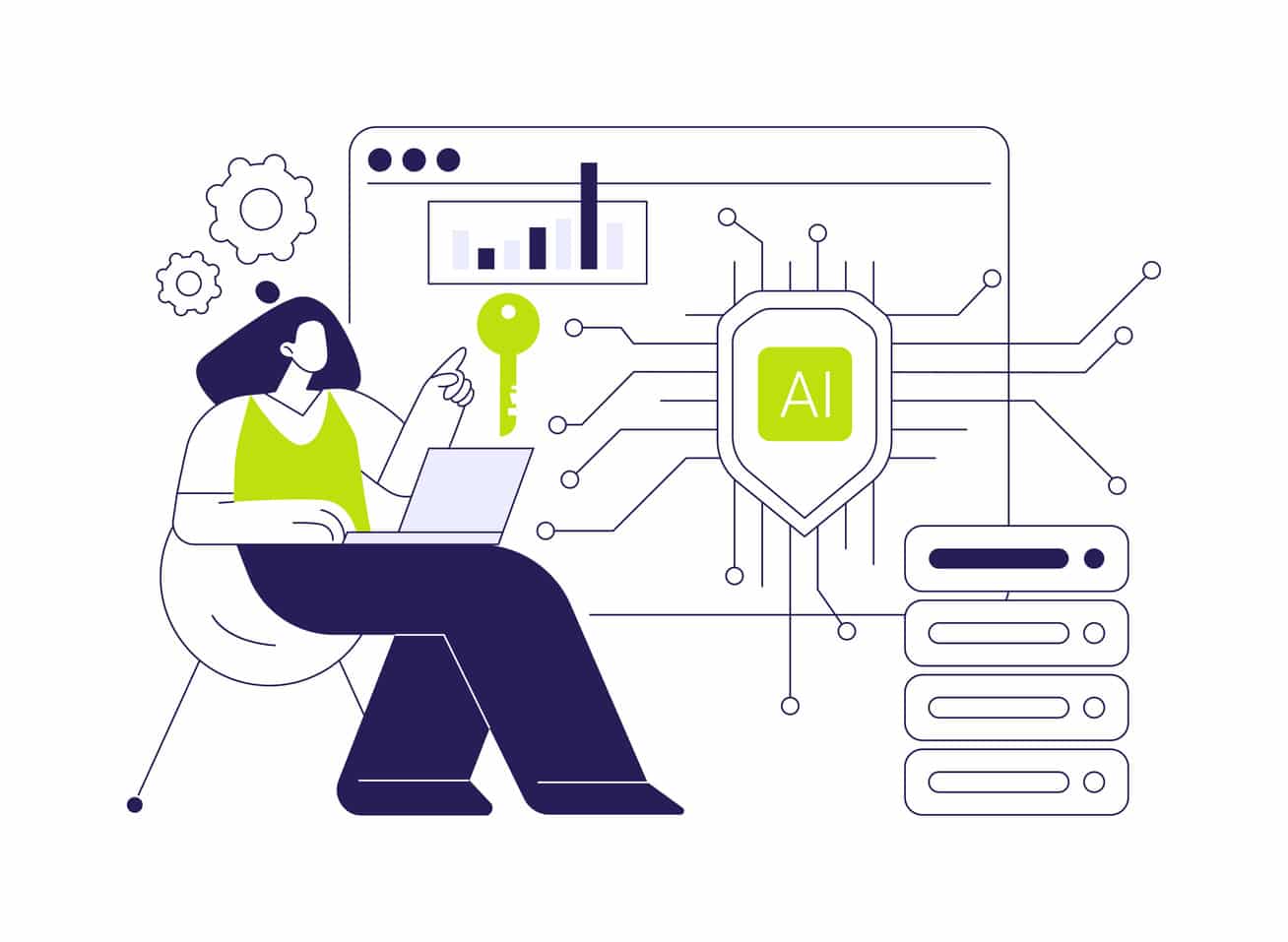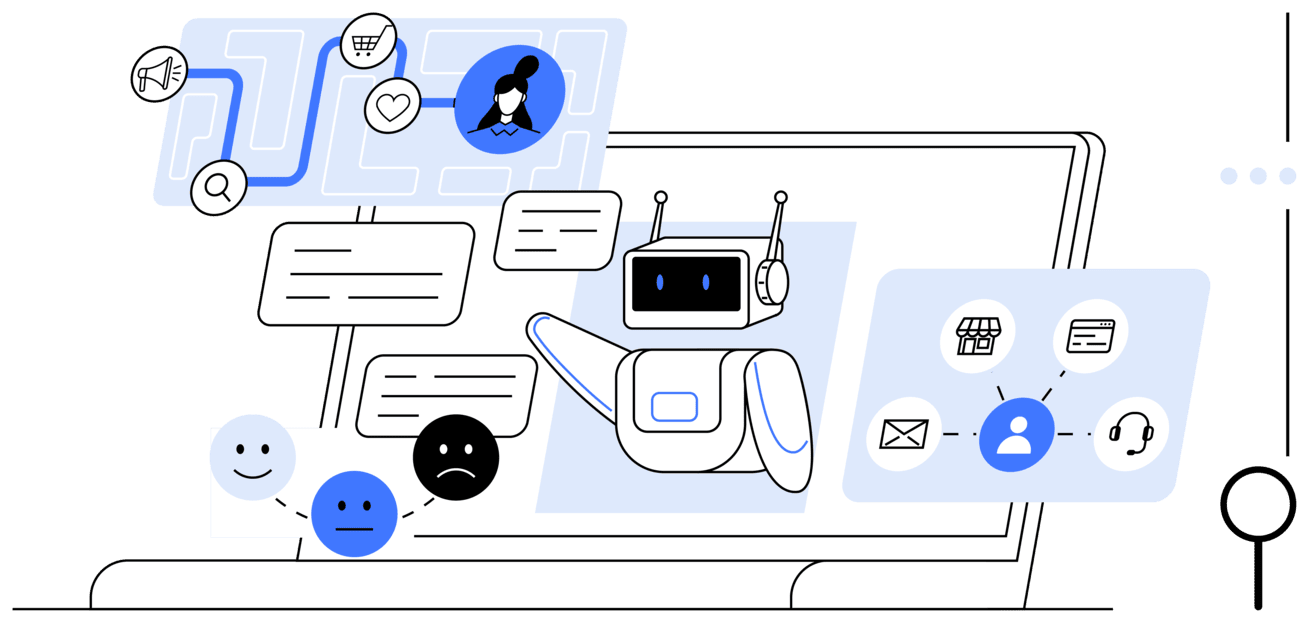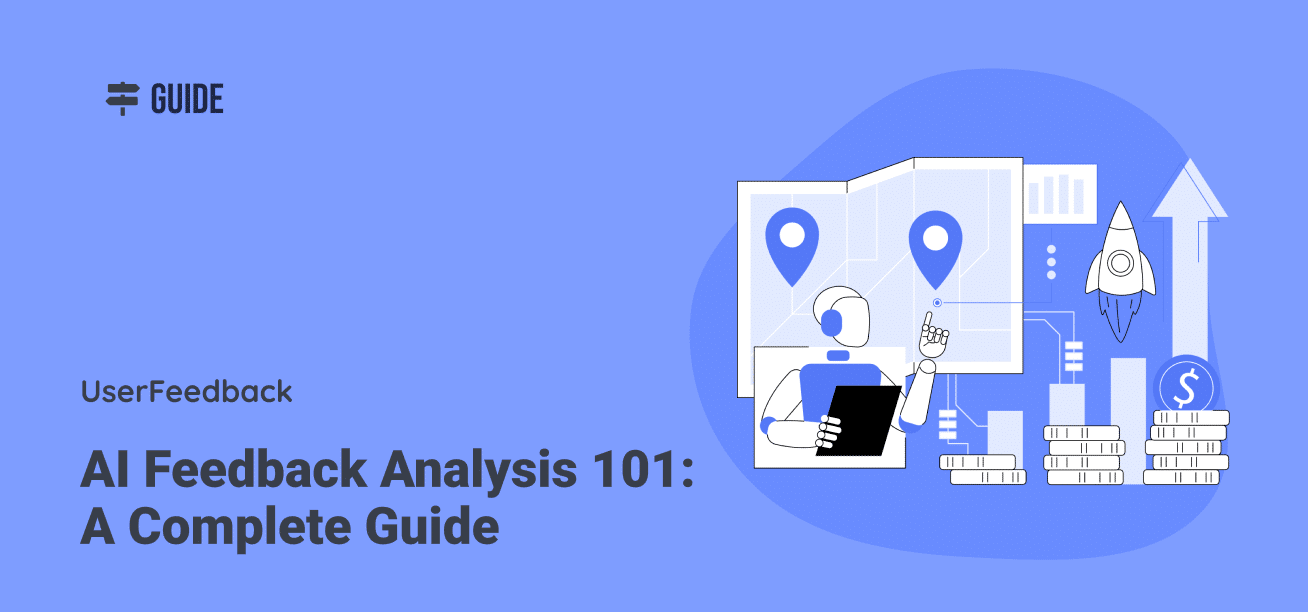Imagine transforming thousands of customer comments into clear, actionable insights in minutes rather than days. AI feedback analysis makes this possible, completely changing how businesses can leverage customer feedback.
This new technology brings an exciting new era you don’t want to miss. So in this comprehensive guide, I’ll walk you through what AI feedback analysis is, why it matters for your business, and how to implement it effectively.
Let’s dive in!
Table of Contents:
- What Is AI Feedback Analysis?
- Why Should You Use AI Feedback Analysis?
- How to Analyze Customer Feedback With AI?
- Challenges and Concerns About AI Feedback Analysis
- Best Tools for AI Feedback Analysis
- Frequently Asked Questions
What Is AI Feedback Analysis?
AI feedback analysis uses artificial intelligence technologies to collect, analyze, and interpret large volumes of customer feedback from different sources. This includes analyzing feedback from surveys, reviews, support tickets, social media conversations, and even customer service calls.
The technology uses natural language processing (NLP) and machine learning algorithms to understand customer sentiments, identify patterns, and extract meaningful insights from unstructured data.
Instead of manually reading through thousands of comments, AI can quickly detect trends, highlight common issues, and uncover hidden opportunities in your customer feedback.
What once took weeks of analysis can now be completed in hours or even minutes, allowing businesses to be much more responsive to customer needs.
At its core, AI customer feedback analysis does three main things:
- Categorizes feedback into relevant topics
- Analyzes sentiment (positive, negative, or neutral)
- Identifies patterns and trends that humans might miss
This technology doesn’t just count keywords—it actually understands the context, emotion, and intent behind customer comments using conversational analytics. This makes it incredibly powerful for businesses that want to understand their customers’ needs and save time.
Why Should You Use AI Feedback Analysis?
Implementing AI feedback analysis brings significant advantages that can directly impact your bottom line. Here’s why you should use it:
1. Saves Valuable Time
Saving time is the biggest advantage of using AI for feedback analysis and it’s probably not a surprise to you. As you know, manual feedback analysis is incredibly time-consuming.
According to a 2024 study by Gartner, marketing professionals spend an average of 14.5 hours per week analyzing customer data. AI customer feedback analysis can reduce this time by up to 80%. This allows your team to focus on implementing solutions rather than just finding problems.
That’s huge!
2. Delivers More Accurate Insights
Humans get tired, skip details, and bring their own biases to data analysis. AI doesn’t. It methodically processes every piece of feedback with consistent accuracy, ensuring nothing important gets missed.
Natural language processing algorithms are particularly effective at understanding subtleties and nuances in text. According to recent research, 86% of marketers confirm that NLP tools save them at least 1 hour daily on creative tasks. All while delivering more consistent work.
3. Identifies Patterns Humans Miss
AI excels at finding connections across large datasets that human analysts might overlook. By analyzing thousands of feedback points simultaneously, AI can spot emerging trends, correlations between different types of feedback, and early warning signs of potential issues.
4. Enables Real-Time Analysis and Response
Unlike traditional methods that might take weeks to generate insights, AI feedback analysis works in near real-time. This means you can quickly identify and address emerging issues before they become major problems.
Imagine knowing about a potential product issue within hours of the first customer mentions, rather than waiting for enough complaints to notice a pattern. This allows businesses to be proactive rather than reactive in their customer experience management.
5. Helps You Understand Customers Better
The ultimate goal of any feedback analysis is to better understand your customers. AI helps you achieve this by providing deeper insights into customer needs, preferences, and pain points.
As Angela Nowaszczuk, Product Owner at Lufthansa Group Digital Hangar explains: “AI has made our product research process faster, more accurate, and more aligned with what our customers truly want… This means we are able to close the feedback loop efficiently, almost in real-time“.
By understanding your customers at a deeper level, you can develop products and services that truly meet their needs. This leads to higher customer satisfaction, loyalty, and ultimately, business growth.
How to Analyze Customer Feedback With AI?

Analyzing customer feedback with AI isn’t just a technological upgrade—it’s a complete transformation in how businesses understand their customers.
And it’s definitely something you want to take advantage of for your business too!
Let’s dive into the practical ways you can use AI to analyze customer feedback and make meaningful improvements.
1. Customer Experience Improvement
For enhancing customer satisfaction and loyalty, AI feedback analysis offers powerful capabilities that traditional methods simply can’t match.
Leverage AI tools to:
Identify Pain Points at Scale
One of the most valuable applications of AI feedback analysis is identifying customer pain points across thousands of interactions. Instead of relying on small sample sizes, AI can process every piece of feedback you receive.
Tools like UserFeedback with its AI Survey Summaries feature are perfect for identifying pain points at scale for WordPress users. It automatically processes and analyzes large volumes of feedback responses, detecting patterns and issues that might otherwise be missed:
The AI can quickly categorize complaints and highlight the most significant customer pain points across thousands of interactions. That’s a massive help and timesaver!
Get started with UserFeedback today!
If you’re not on WordPress, another effective method is using sentiment analysis tools like Clarabridge from Qualtrics or Medallia. These tools can automatically tag negative feedback and categorize specific issues.
Many businesses are now also using AI assistants like ChatGPT to analyze customer feedback data. Here’s a simple process I recommend:
- Export your feedback data to a spreadsheet
- Clean and organize the data
- Create a prompt that clearly explains what you’re looking for
- Feed the data into the AI assistant with your analysis request
For example, you might ask: “Analyze these customer comments and identify the top 5 complaints, common feature requests, and positive feedback themes.”
This approach works well for smaller datasets and quick insights. However, it has limitations for ongoing analysis and large amounts of data.
Track Sentiment Trends Over Time
AI is great at monitoring how customer sentiment changes over time, especially after product updates, policy changes, or marketing campaigns.
Consider setting up sentiment-tracking dashboards that show:
- Weekly/monthly sentiment scores
- How customers feel about specific parts of your product
- Connection between customer sentiment and customer retention
This helps you quickly see if your changes are working so you can make adjustments when needed.
Personalize Customer Journeys
By analyzing feedback patterns from similar customer segments, AI can help you create more personalized experiences. For instance, you might discover that enterprise customers have completely different priorities than small business users. Use this info to tailor onboarding journeys for each segment.
According to research by McKinsey, companies that excel at personalization generate 40% more revenue than average companies. So take a look at your different groups of customers and what they’re telling you.
Are there any processes or offerings that should be changed for one group?
2. Product Development Guidance

AI-driven feedback analysis has transformed how product teams make decisions, moving from gut instinct to data-informed decisions.
Here’s how you should use AI feedback analysis for product development:
Prioritize Feature Requests Intelligently
Rather than simply counting feature requests, AI can analyze the context and sentiment behind them. This helps you understand not just what customers are asking for, but why they need it and how important it is to them.
For example, a feature requested by only 10% of customers might actually address a critical pain point that affects customer retention. This makes it more valuable than a feature requested by 30% of customers but with a lower impact.
Identify Emerging Issues Before They Scale
AI can detect subtle patterns that indicate potential product issues before they become widespread problems. By analyzing early feedback signals, you can address bugs or usability issues before they affect your wider customer base.
Test and Validate Product Decisions
After implementing changes based on feedback, AI analysis helps you validate whether those changes actually solved the issue quickly.
Create a feedback loop where you:
- Identify issues through AI analysis
- Implement solutions
- Collect new feedback
- Analyze the impact on customer sentiment
This closed-loop approach ensures your product decisions are truly improving the customer experience.
Read our full guide on How to Get Customer Feedback Online (6 Best Ways).
3. Market Trend Monitoring

Staying ahead of market and demographic trends is crucial for being competitive. And AI feedback analysis provides a powerful lens for spotting these shifts.
Here’s how you can:
Detect Changing Customer Preferences
AI can spot subtle shifts in what customers value or expect from your product or service. For instance, an AI analysis might reveal a growing interest in sustainability features that wasn’t obvious from traditional market research.
According to a 2024 study, 76% of companies using AI for trend monitoring identified important market shifts at least 3 months before their competitors.
For trend monitoring, tools like Qualtrics XM or Brandwatch are excellent choices.
Alternatively, you could use an AI-powered social listening platform like Sprout Social or Mention to track conversations about your brand across different channels. These tools can spot new trends and changes in customer sentiments before you’d notice them through regular methods.
Marketing teams can leverage AI feedback insights to create more effective, customer-centric campaigns.
For example, by analyzing customer feedback, you might discover that:
- The language customers use to describe your product is different from your marketing copy
- Certain benefits matter more to customers than what you’re highlighting
- Success stories from specific customer segments resonate more widely
These insights allow you to align your marketing messages with what truly matters to customers, increasing conversion rates and marketing ROI.
Benchmark Against Competitors
When customers mention competitors in their feedback, AI can analyze these references to understand how you compare specific features or experiences.
Create competitive intelligence reports that show:
- Features where competitors are mentioned positively
- Areas where your product outperforms competitors
- Emerging competitive threats
This intelligence helps you prioritize improvements that directly address competitive gaps!
Analyse Segments by Demographics
AI can reveal how different demographic groups experience your product differently. You might discover that younger users struggle with certain features that older users find intuitive, or that international customers have unique needs not met by your current offering.
This granular understanding allows you to tailor your product and marketing strategies to specific audience segments, increasing relevance and engagement.
4. Real-time Adjustments
The speed of AI feedback analysis enables businesses to be much more agile in responding to customer needs.
It allows you to:
Immediately Response to Critical Issues
When serious issues arise, every minute counts. AI can flag critical feedback that requires immediate attention, allowing support teams to proactively reach out to affected customers.
Dynamically Allocate Ressources
By understanding which issues are trending in customer feedback, you can dynamically allocate support, development, and marketing resources to address the most pressing concerns.
For example, if AI analysis shows a spike in questions about a specific feature, consider:
- Create an urgent FAQ page addressing those questions
- Temporarily increase customer support staff trained on that feature
- Fast-track improvements to address the underlying issue
Challenges and Concerns About AI Feedback Analysis
While AI feedback analysis is incredibly beneficial, it’s important to understand the potential challenges or limitations. Understanding these challenges helps you get better insights from your customer feedback and find more effective solutions.
Key challenges to watch out for:
- Bad Data – AI can only work with what you give it. If your data is limited or biased, your results will be too.
- One-sided Feedback – Very happy or unhappy customers tend to speak up most, which can distort your overall picture.
- Trusting AI Too Much – Don’t let AI make decisions alone. Always have humans check the results.
- Language Differences – AI might miss cultural cues about how people from different backgrounds express satisfaction.
- Missing the Joke – AI often doesn’t get sarcasm or humor, leading to incorrect conclusions.
- Privacy Issues – Make sure you follow laws about collecting and storing customer information.
Simple Solutions:
- Gather feedback from many different places
- Use both AI and human review together
- Start small before trying to analyze everything
- Pick tools that give clear, easy-to-understand results
- Double-check AI findings by talking to real customers
- Keep sensitive information secure
- Tell customers how you’ll use their feedback
Remember that AI feedback analysis isn’t about replacing human judgment—it’s about enhancing it. The right balance of technology and human oversight will help you gain deeper customer insights while avoiding any issues.
Best Tools for AI Feedback Analysis

Finding the right tools can make all the difference when implementing AI feedback analysis. These tools offer various capabilities to help you unlock valuable insights from customers with the power of AI.
- UserFeedback – The AI Summaries feature automatically analyzes open-text responses, saving hours of manual review while providing actionable insights directly in your WordPress dashboard.
- Qualtrics XM – Enterprise-level customer experience platform with advanced AI capabilities for comprehensive feedback analysis across multiple channels.
- SurveyMonkey – A popular survey tool with integrated AI features that can analyze responses and identify key themes and sentiments.
- Clarabridge from Qualtrics – Specialized in text analytics and sentiment analysis with robust AI capabilities for detailed feedback interpretation.
- Medallia – Experience management platform with AI-powered analytics for customer and employee feedback.
Start with something manageable that integrates well with your existing systems, and you can always scale up to more sophisticated solutions later if needed.
Frequently Asked Questions
Can I use AI for feedback?
Absolutely! AI excels at analyzing customer feedback at scale, transforming thousands of responses into actionable insights within minutes. With tools like UserFeedback, you can implement AI analysis directly on your WordPress site without technical expertise – automatically categorizing feedback and highlighting key themes for immediate action.
How accurate is AI feedback analysis?
Modern AI feedback analysis typically achieves 80-90% accuracy in sentiment detection when used correctly. Accuracy depends on data quality, customization for your industry, and feedback complexity. For best results, use AI to identify broad patterns but have a human check critical or nuanced feedback.
How does AI summarize customer feedback?
AI summarizes feedback by processing text, recognizing patterns across responses, categorizing similar content, analyzing sentiment, and generating concise summaries highlighting key themes. UserFeedback’s AI Summary feature performs this automatically with one click, understanding context beyond simple keyword counting to deliver insights that truly reflect customer sentiment.
And that’s it!
I hope you liked my guide and AI feedback analysis and feel inspired to take advantage of this exciting new technology.
If you liked it, maybe you’d like this The Ultimate Guide to Customer Feedback.
Ready to start collecting valuable feedback? Try UserFeedback today!
And don’t forget to follow us on X and Facebook to learn more about customer feedback and growing your business.




